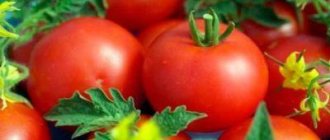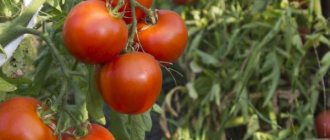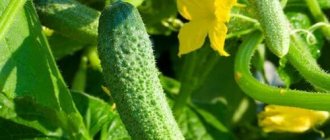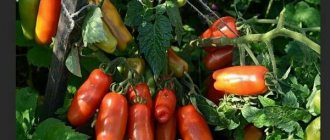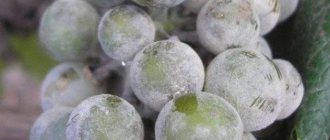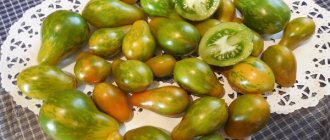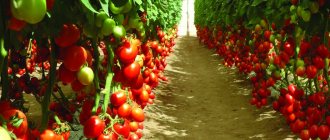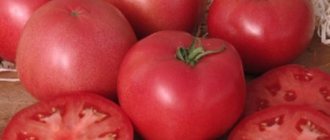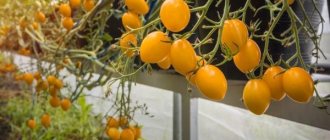Tomatoes are tasty and healthy vegetables that are easy to care for, which is why they are so popular. There are many varieties and hybrids that differ in color, taste, size and yield.
| Height | Landing location | Ripening time | Fruit color | Fruit size | Origin | Fruit shape |
| short | Greenhouse, Open ground | Early ripening | Reds | Large | Hybrid | Round |
Tomato Argonaut: variety description, photos, reviews
Not all varieties and hybrids of tomatoes can bear fruit abundantly in garden beds in open ground. Therefore, it is better to know which tomatoes are best to plant in your garden in order to get a generous harvest of tomatoes with good taste.
One of these hybrid tomatoes is the Argonaut f1 tomato
– a variety that has high immunity, is not affected by common diseases even under unfavorable weather conditions, the fruits of which ripen early and smoothly.
All the characteristics of the Argonaut f1 hybrid, its advantages and disadvantages, and the nuances of cultivation will be discussed below.
The content of the article:
1. History of creation 3. Main characteristics and description of the Argonaut variety 3. Productivity of the Argonaut tomato variety 4. Agricultural technology for growing Argonaut f1 tomato 5. Advantages and disadvantages of Argonaut tomato variety 6. Reviews of the Argonaut tomato variety 7. Information from the manufacturer
Bush care
After the plants have been planted, regular care should be established. The variety is very unpretentious, so it will not cause problems in cultivation. It is necessary to periodically loosen the soil and do not forget to water it when it dries out.
Properly formed bushes are the key to success. Remove all the stepsons from the bottom to the very top, but leave the two upper trunks. Tomatoes form into three stems. The leaves covering the brushes must be cut off.
Young shoots need to be fertilized once every 7 days with liquid fertilizer. After planting the seedlings, they need to be watered every 10 days. The soil under the tomatoes must be regularly loosened and weeded to remove weeds.
The bushes are formed into three stems with obligatory tying to pegs. After tomatoes bloom, stepsons practically do not form, so for more uniform growth of the bushes and ripening of the fruits, you need to carefully tear off the leaves shading the clusters.
The Argonaut F1 variety is practically not susceptible to diseases and insect pests. Gardeners recommend treating bushes with phytosporin in order to completely eliminate the risk of disease.
The only danger to the hybrid is the mole cricket. To combat this pest you need to use special chemicals. You can also get rid of mole crickets by regularly loosening the soil under the beds and adding pepper to the soil.
Description of the tomato variety "Argonaut"
The tomato hybrid Argonaut f1 is an early ripening variety; it is classified as a determinant type, so the bushes have limited growth vigor. From the moment the first seedlings appear until the ripe fruits are collected, about 3 months pass.
The bushes are quite compact and miniature - the height of the shoots can reach 0.65-0.7 m. The number of side shoots is average. The bushes do not require the formation and removal of stepsons. However, despite the small height of the stems, they need to be tied up during the ripening period, otherwise the shoots may “fall” in different directions, and sometimes break.
Interesting!
Since the variety is early, it does not have time to be affected by the main diseases inherent in vegetable plants from the nightshade family: late blight, powdery mildew and some other diseases.
The shoots are quite strong and powerful, the foliage is narrow, elongated, typically tomato, dark emerald in color.
The flowers are collected in racemose inflorescences, each of which can ripen up to 5-6 fruits. The first brushes can be laid after 4 true leaves. In total, no more than 6 brushes can grow on one bush.
Photo of tomato Argonaut
Description of the fruits and taste characteristics of the Argonaut tomato variety
Ripe fruits are round in shape, even and smooth. The skin is dense, bright red, not prone to cracking. The pulp is quite fleshy, with up to 8-9 seed chambers located inside. Fruit weight – 160-180 g. From each bush you can collect up to 4 kg of ripe fruits.
The taste and presentation of the harvested crop are high. The harvested crop can easily withstand transportation over long distances without losing its taste. The keeping quality of the collected fruits is not bad.
The best varieties of tomatoes!
• Large MAZARINE tomatoes • Yellow tomatoes BANANA LEGS • Cherry LEOPOLD F1
The purpose of ripe tomatoes is universal; they can be eaten fresh, prepared in salads and various snacks, and also used for preservation - salted, pickled, made tomato juice and paste.
Since this hybrid is early ripening, it is not susceptible to late blight, which develops on plants from the beginning of August. The Argonaut f1 tomato is also highly resistant to other diseases that damage many varieties of tomatoes.
Tomato Argonaut f1 yield
When growing tomatoes of the Argonaut variety in open ground, their yield is up to 4 kg per bush. When growing plants in a greenhouse and film shelters, the yield can be increased to 4.5-5 kg of tomatoes per plant.
Pest and disease control
This hybrid is not prone to disease, but for preventive purposes, treat it with Fitosporin.
The mole cricket poses the greatest threat to tomatoes among pests. With powerful claws, it digs a hole up to 1 meter deep, but likes to settle closer to the surface and the sun. You can fight it in several ways.
- Installation of fences. We fence the area on all sides with tin plates going 55 centimeters deep.
- Treating holes with kerosene. Mix 0.1 liter of kerosene and 10 liters of water, pour one and a half spoons into the holes. The procedure is carried out in the evening.
- Pine smell. Dig small holes around and throughout the garden and bury pine needles in them; you can also put them in holes.
- Fish heads. Bury fish heads to a depth of no more than 30 centimeters, and the mole cricket will not bother you.
In addition to traditional methods, you can resort to special repellers. They are: chemical, electrical and ultrasonic. Choose those that are more convenient for you to use.
Recommended tomato varieties
Early maturing / Low growing
Nepas 6 non-stick red with spout User rating: 5/5
Mid-early / Low-growing
Minigold User rating: 5/5
Early maturing / Low growing
Shuttle User rating: 5/5
Mid-early / Low-growing
Gift of the Volga pink User rating: 4/5
Tomato "Argonaut": growing, planting and care
This hybrid is recommended for growing in most parts of Russia by seedlings, and only in the southern regions can Argonaut tomato seeds be sown directly into the ground.
Purchased seeds do not need to be subjected to pre-sowing preparation, since they are already prepared for planting by the seed manufacturer. However, many summer residents soak the seed material in a solution of growth stimulants before planting.
The soil for planting seeds must be fertile; for this, garden soil, humus and river sand are mixed in a ratio of 1:1:1. But you can also buy a ready-made nutrient substrate in a specialized store.
Landing dates:
It is recommended to sow seeds for seedlings in the first ten days of April.
It is advisable to immediately plant the seeds at a distance of 1.5-2 cm from each other. Containers with planted seed material are covered with film and placed in a shaded, warm place for germination. As soon as the first shoots appear, the polyethylene is removed and the containers are moved to a well-lit place. If the sprouts do not have enough light, they will stretch, the stems will be too thin, and the plants themselves will be weak.
Video about Argonaut f1 tomatoes
During the period of seedling growth, they are fed a couple of times with a urea solution. Strong and healthy Argonaut tomato seedlings are planted in a permanent place in mid-to-late May (depending on the weather conditions of a particular region).
After transplanting the seedlings into open ground, further care of the plants consists of regular watering, loosening the soil, removing weeds, and applying fertilizers.
Feeding rules
Watering should be regular, but not excessive - tomatoes are watered when the top layer of soil dries out. Feeding is carried out several times per season.
The first feeding of tomatoes is carried out a couple of weeks after transplanting the seedlings to a permanent place. Typically, a solution of mullein or a complex mineral fertilizer with a high nitrogen content is used.
The following fertilizing is applied at the beginning of flowering and during the period of fruit ripening. Such fertilizers should include phosphorus and potassium.
Landing
We plant the seeds in pots in early April. We check the seeds for germination. We place them in salt water, throw away the ones that drown, and wash the ones that remain afloat under warm, running water, dry them and sow them.
Do not forget that the pots must have holes that provide the plants with the necessary oxygen. We plant the seeds to a depth of one centimeter. Water it periodically and place it in the sun.
We transplant into the ground after the end of frost around the end of May. Select an area that receives moderate sunlight and is protected from strong winds. Before planting, loosen the soil, you can add organic fertilizers.
Do not add mineral fertilizers until the tomatoes become stronger.
Due to the fact that the variety is considered low-growing, planting is recommended according to a 60 by 60 centimeter pattern.
Argonaut variety tomatoes: advantages and disadvantages
According to reviews from summer residents who grow this hybrid, it has many undoubted advantages:
- early harvest ripening;
- the yield is quite high;
- the fruits are even, smooth with a dense skin that is not prone to cracking even during heat treatment;
- fruiting is stable and not affected by negative weather conditions;
- the variety is resistant to rain and heat;
- can easily tolerate drops in temperature;
- high resistance to most diseases affecting other vegetable plants from the nightshade family, and to attacks by pests.
No serious shortcomings were noted in the Argonaut f1 hybrid, however, it should be recalled that the bushes of this variety require mandatory garter.
How to grow tomatoes without chemicals
The yield of the Argonaut tomato hybrid can be increased by following certain rules of agricultural technology:
- You need to fertilize the seedlings once a week with liquid fertilizers for seedlings of vegetable plants.
- During transplantation, it is necessary to use preparations to strengthen the root system, as well as ash, which is used to powder the holes.
- Before planting seedlings, they must be carefully inspected. Weakened or broken plants should be thrown away.
- Tomato bushes are planted according to the pattern of 150 cm between rows and 40-50 cm between bushes.
- It is best to water tomatoes by drip.
- After planting the bushes, it is necessary to water the tomatoes every 10-12 days.
- It is better to mulch the soil under the plant with finely chopped grass, hay or straw.
- It is necessary to timely feed and fertilize the bushes. Loosen and weed beds. To obtain tomato harvests earlier than stated by the manufacturer, you can use the new generation biostimulator “Vitazim”.
- The first fertilization with a nitrogen formula should not be skipped. It is carried out 5-7 days after planting the seedlings in the beds. Then they are fertilized with potassium fertilizers according to the scheme.
- The beds should be carefully prepared for planting seedlings. Warm beds have proven themselves well:
- cardboard is placed at the bottom of such a bed;
- then a layer of sawdust about 10 cm is loaded on top;
- lay hay or fresh grass on the sawdust and compact it with a layer of 30 cm;
- sifted humus or compost mixed with ash and soil from the site is the top layer of the bed. It should be approximately 20-30 cm, but more is possible.
Warm beds only need to be watered. They work great for 3 years without adding any additional fertilizers.
>
Tomato "Argonaut": reviews and photos of those who planted
Although the Argonaut f1 variety was recently bred, it has already become popular among summer residents and farmers, who leave their reviews about this hybrid on gardening forums. Some of these reviews are listed below:
Katya, Chelyabinsk region:
This is my second season growing this hybrid. In our unpredictable climate, I prefer to plant vegetables in a greenhouse. I liked Argonaut f1 because of the early ripening of fruits, their excellent taste and good keeping quality.
Alena, Smolensk:
I planted this variety in my garden. Argonaut does not require special care; she noted the friendly and rapid ripening of fruits with excellent presentation, as well as their versatility. However, I would like to note that the tomato juice from Argonaut fruits turned out to be sour.
The best tomato varieties!
• Early tomato RED GUARDS • SCARLET MUSTANG • Productive VISIBLE AND INVISIBLE • VALENTINA
Oksana, Voronezh:
I grow tomatoes of this variety using seedlings. Argonaut tomato seedlings grow at home on the windowsill, when at least 5-6 permanent leaves appear on them, I transplant them to the beds in the greenhouse. I usually transplant seedlings in mid-May, when they are at least 55 days old. The harvested crop has a good presentation and tolerates transportation well. And the yield is quite high; last year I even sold part of the harvest.
Nina, Ulyanovsk:
I grow tomato variety Argonaut f1 specifically for sale, since the fruits ripen early, the variety is productive, and ripe tomatoes have an excellent presentation and good taste.
Although the seeds of this hybrid have appeared on the shelves of specialized stores recently, the Argonaut tomato has already become popular among farmers, many of whom grow it for further sale of the harvested crop. However, some summer residents use ripe fruits for canning and preparing tomato paste and sauces.
Growing tomatoes
Tomatoes of the Argonaut F1 variety are grown in compliance with certain requirements - only in this case a high yield is guaranteed.
How to prepare seeds?
Selected planting material must be disinfected. The seeds are placed in a solution of potassium permanganate for 20-24 hours. After the specified time, the seed must be washed with clean water and dried thoroughly.
Sowing seed material
Disinfected and dried seeds are planted in a wide, shallow container. The soil for planting material must be fertilized with humus.
Tomato seeds should be planted in early April. The distance between the seeds should be 2 cm. It is recommended to cover the container with future seedlings with polyethylene for better seed germination.
Tomato hybrid for open ground Argonaut F1 - description from the manufacturer Myazina L
Selection was aimed at the large fruit and taste of the tomato For open ground Determinate plants Shooting will accelerate ripening 85 days from germination to the beginning of ripening Tolerates a lack of light high fruit set Tasty, red, fleshy fruits, weighing 200-240 g Early ripening allows you to “escape” late blight Yield from the bush in o/g - 3.5-4.0 kg For salads and canning, pickling Code in the State Register of the Russian Federation 8654272
Manufacturer: Gardens of Russia, Myazina Lyubov, etc.
Features of cultivation
We sow the seeds in early April. Then, by the end of May, you can transplant the seedlings into indoor or open ground. Although there are no strict instructions for planting, planting under sheds or in greenhouses is recommended for northern regions. In the southern regions, you can choose any type of landing.
We form a bush with 3 stems. Don’t forget to tie our plants to stakes, because as we remember, they are prone to “overwhelming”. Stepchildren usually do not appear in this variety, but if they appear, do not forget to remove them. If the stepsons are left, the plant will begin to branch heavily, thicken and become oversaturated with tomatoes. The tomatoes will grow small.
When they are small, they absorb only a small part of the nutrients. If you are late with pinching, you can cause significant damage to the plant, which will significantly reduce the yield.
It is recommended to fertilize with organic matter, a maximum of 4 times per season.
